Orbital debris is (nearly) forever, and threatens to render near-Earth space (under 1250 miles, or 2000 km altitude) unusable, and all but impassible. The 2007 Chinese anti-satellite test and the accidental collision between two communications satellites in 2009 highlighted the need to study orbital collisions of modern satellites. The NASA Standard Breakup Model (SBM), based on hypervelocity collision studies of 1960s-era satellites, fails to accurately describe collisions of modern satellites, owing to advances made in materials and construction. To address this problem, NASA is updating the SBM by enlisting the University of Florida to build and destroy a modern dummy satellite called DebriSat.
DebriSat is a dummy 110 lb (50 kg) satellite, 20 inches (50 cm) on a side, whose construction will be representative of modern near-Earth satellites.
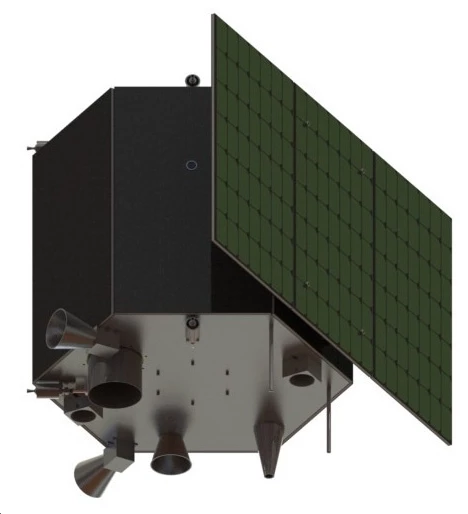
Although DebriSat is a nonfunctional engineering model, it will incorporate new materials and construction methods such as multi-layer insulation, composite materials, modern computers and communication equipment, and solar panels with high-efficiency solar cells. For example, electronic circuitry will be made of modern chips, components, and board materials, but need not function. The DebriSat design is intended to be representative of all sizes of near-Earth satellites, and will undergo a hyper-velocity impact test at Arnold Air Force Base.
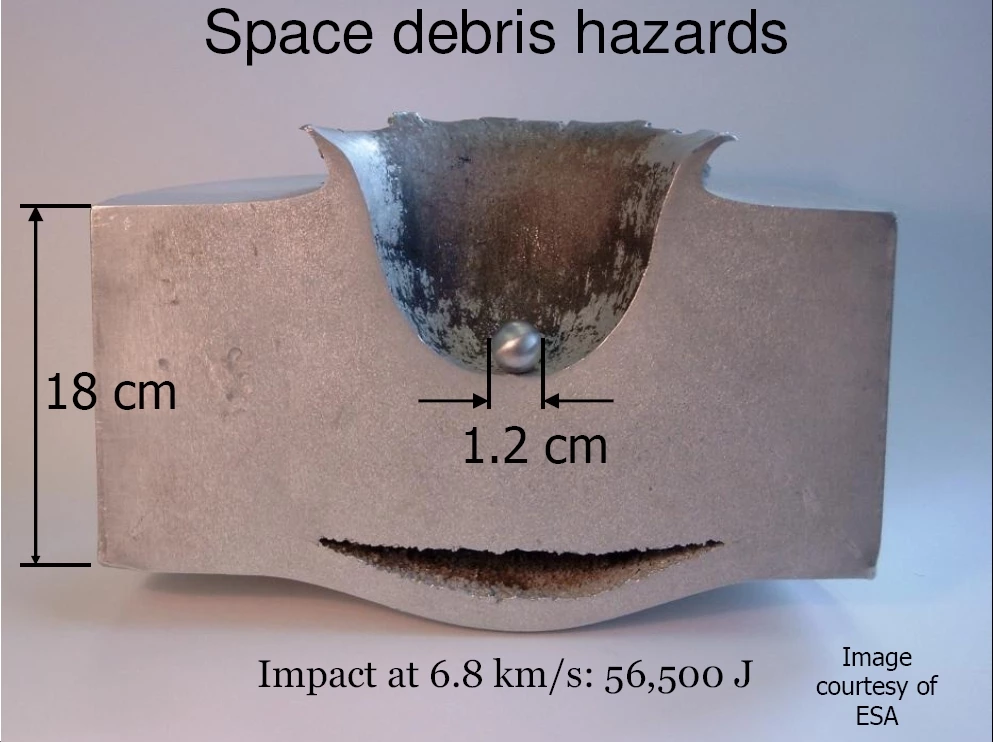
The image above shows a 1.2-cm (0.47-in) aluminum sphere striking a seven inch (18 cm) thick aluminum plate at a velocity of 6.8 km/s (4.2 miles per second), giving some idea of the destructive power of hypervelocity impacts. The projectile fired at the DebriSat will be a two inch (5 cm) aluminum sphere impacting at a speed of seven km/s, giving the collision a total energy equivalent to about four pounds (1.8 kg) of TNT, more than enough to thoroughly disassemble DebriSat. The resulting fragments will be counted and studied to provide a better understanding of future satellite breakups.
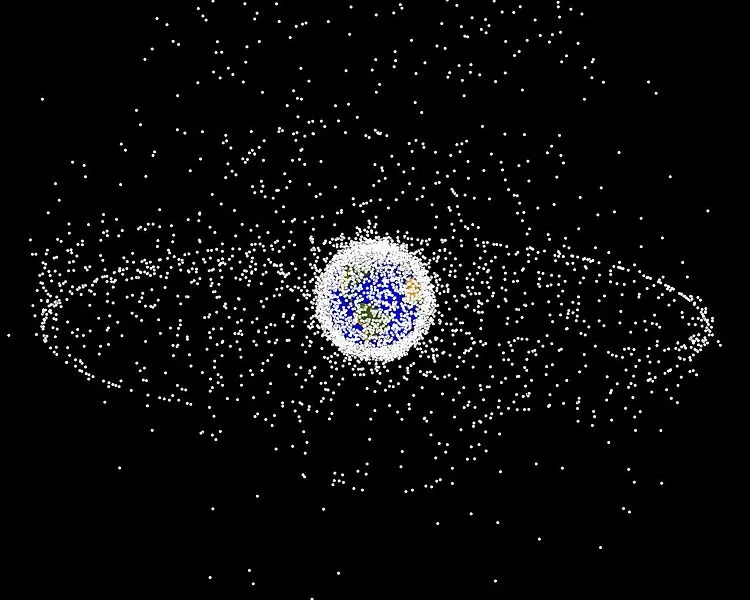
Just how important is the problem of orbital debris? At present (2012), there are roughly one thousand operational satellites, half of which are in near-Earth space, according to the Union of Concerned Scientists Satellite Database. But in addition to about 40 derelict satellites, the U.S. Space Surveillance Network is tracking more than 22,000 pieces of debris, each of which is larger than about 4 inches (10 cm), the reliable detection limit of their radars and telescopes. Only two weeks ago the explosion of a Russian upper stage rocket added over 500 large pieces of debris to the problem.
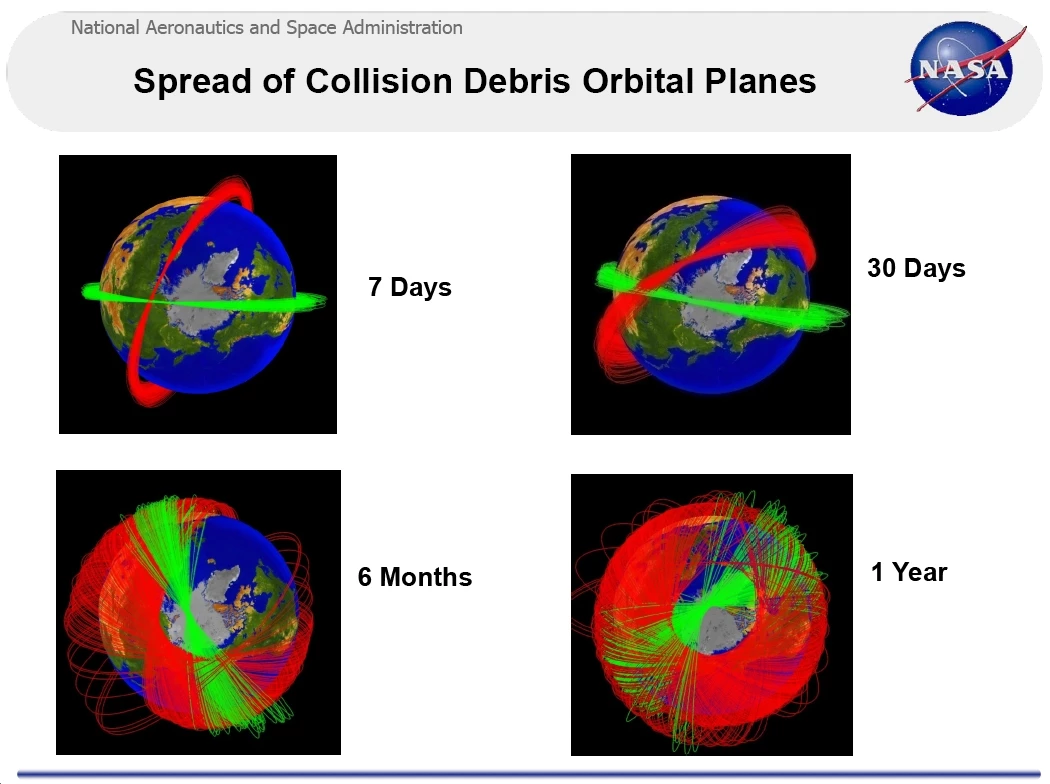
Collectively, this debris has caused a number of second-hand collisions or near misses, where a large fragment from an earlier collision threatens an unrelated vehicle. Here are some of the instances of second-hand collisions that history records:
- 1981 – Cosmos 1275 destroyed
- 1991 – Shuttle avoidance of fragment of Cosmos 955
- 1996 – CERISE (Fr.) damaged by Ariane upper stage fragment
- 2006 – Express-AM11 (Rus.) disabled
- 2009 – Massive collision of Iridium-33 and Cosmos 2251
- 2009 – ISS near-miss of fragment from Cosmos 1275
- 2012 – ISS avoidance of fragment of Iridium-33
It is clear that the number of collisions or near-misses with orbital debris is increasing in recent years. This is not because of a jump in the number of operational satellites, but rather is due to rapidly increasing amounts of sizable orbital debris. Like shooting for quail, it is far easier to succeed when using a shotgun than a rifle.
Two things make this analogy imperfect: in space, the orbital debris is around for decades instead of a few seconds, and when you hit a quail, it doesn't break into hundreds of pellets, each of which can kill another bird. What this does sound like is nuclear fission chain reactions, which brings us to the Kessler Syndrome.
Very roughly, the Kessler Syndrome is entered when the amount of orbital debris in near-Earth space exceeds a critical value. At that point, more new orbital debris is generated from collision of objects already in orbit than is removed by re-entry or comminution into relatively harmless dust. This increases the rate of collisions, which increases the amount of debris, and so on. In the end, near-Earth space looks like it has gone through a grinder – filled with unpredictable swarms of relatively small but thoroughly lethal orbital debris that, in the end, can make near-Earth space unusable, and all but impassible.
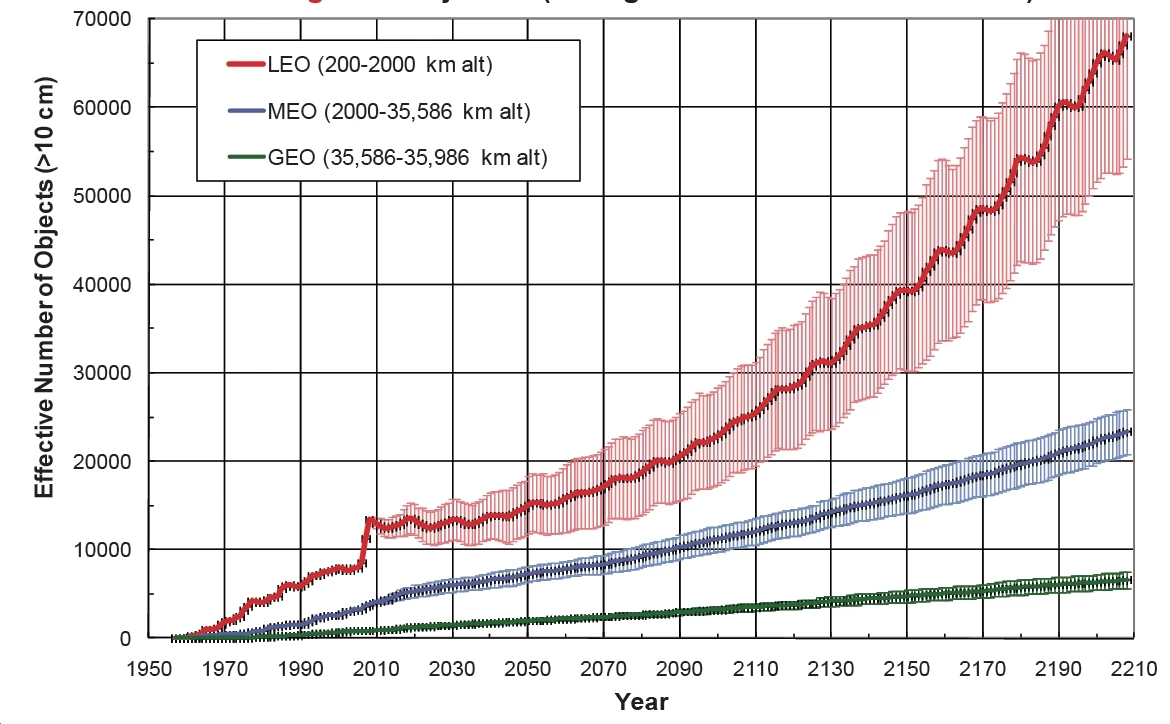
The pace of the Kessler Syndrome is slow in the early stages, owing to the rarity of large-scale collisions. But once the amount of orbital debris passes the critical value, the syndrome will continue to completion even if no additional satellites or launch vehicles are added to the picture. Most calculations today suggest that the density of orbital debris is above the critical value in large portions of near-Earth space, especially above about 500 miles (800 km).
If the estimates are valid, we are left with only two broad courses of action. We can give up using space for a thousand years or so while the debris is falling from the sky, or we can clean up our mess. The models predict that simply reducing the amount of mess we make in the future won't work. We have to actively remove a significant fraction of the orbital debris. Dodging better won't work either in the end, as this doesn't stop or even substantially slow the Kessler Syndrome.
There is no real question of being able to remove large hunks of debris. Dozens of possible methods have been suggested, and several are under development. However, when you get down to fundamentals, this is a classic short-term vs long-term dilemma. The cost of removing defunct satellites is much larger than the short-term risk that they will eventually destroy another satellite, but is far smaller than the long-term near certainty that humanity will lose access to space if the debris problem is simply ignored. Short-term your company wins; long-term your species wins. It's our decision to make, and the sooner the better.
Source: NASA Orbital Debris Program







